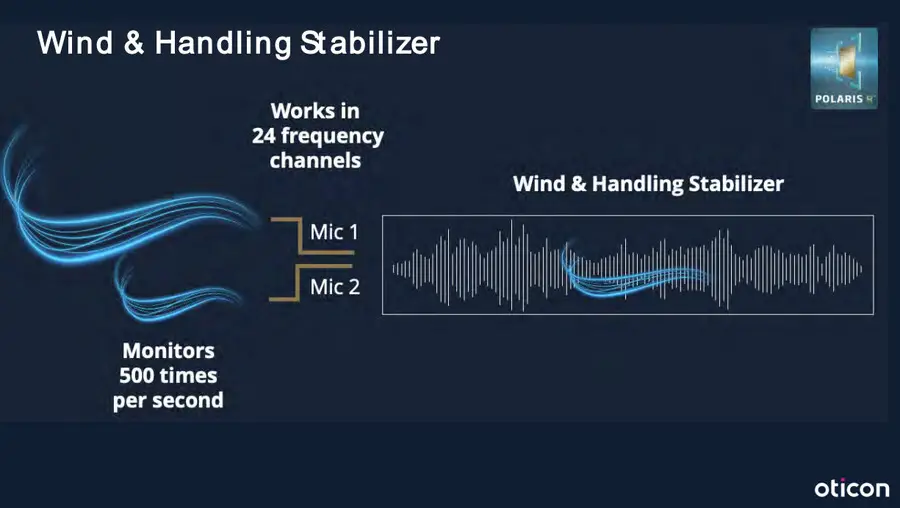Are you tired of wind noise and handling noise interfering with your ability to hear clearly through your hearing aids? Oticon’s Real hearing aids now feature the Wind & Handling Stabilizer in their MoreSound Intelligence 2.0 system, which ensures that less wind and handling noise enter the sound processing in the first place. See my other article to find out more about the SuddenSound Stabilizer or Oticon Brainhearing features.

Optimized Audibility in All Environments
Thanks to this new and innovative technique, any residual wind noise entering the system is rapidly suppressed, resulting in optimized audibility. The system also improves access to speech in all environments, meaning that you’ll hear all relevant sounds clearly, no matter where you are.
The Problem of Wind Noise in Hearing Aids
Have you ever walked on a beach on an extremely windy day, only to have the wind swirling around your head and blowing all over the place? This can be particularly problematic for hearing aid users, as wind noise can be harsh and uncomfortable. When wind gets into the hearing aid microphones, it can cause a loud, unpleasant sound.

Handling Noise
Handling noise is less referenced in the industry but includes the sound from hair brushing against the microphones or when the user adjusts their hearing aids or puts on glasses or a mask. A large survey of hearing aid wearers across multiple countries found that an astonishing 93% of hearing aid users wear eyeglasses. Patients report that eyeglasses hitting their devices is not only annoying, but it changes their behavior in terms of how they place their glasses in relation to their hearing devices.

The Solution
Traditionally, when wind or handling noises occur, the hearing device will take in sounds from both microphones, resulting in a turbulent sound that’s amplified, usually in the low frequencies. This noise is then addressed by whatever noise management system is in place. However, the Wind & Handling Stabilizer uses a patented signal processing to address wind noise or handling noise in MSI 2.0 before it’s even sent to the DNN.
The new detectors on the Polaris R platform are constantly monitoring each hearing aid microphone at 500 times per second, looking for the presence of noise created by wind or handling. The system then determines which microphone is receiving the most noise. When the wind or handling noise is detected, the microphone receiving the least amount of noise is prioritized. The microphone with more turbulence is momentarily deactivated but only in the frequency channels affected by the wind or the handling noise.
This way, wind and handling noise are limited from getting into the hearing aid in the first place. This feature is dynamic, meaning that it’s only activated if wind or handling noise is present. Any remaining wind and handling noise in the open microphone is efficiently removed by a modulation-based noise reduction system.
Conclusion
The Wind & Handling Stabilizer is a game-changer for hearing aid users who have struggled with wind noise and handling noise. It ensures optimized audibility in all environments, making it easier for you to hear all relevant sounds clearly, and improves access to speech. Whether you’re walking on a windy beach or fixing your hair, you can now do so without any annoying or uncomfortable noise interfering with your hearing aids. This is a feature in the Oticon Real hearing aids and likely all future devices.
